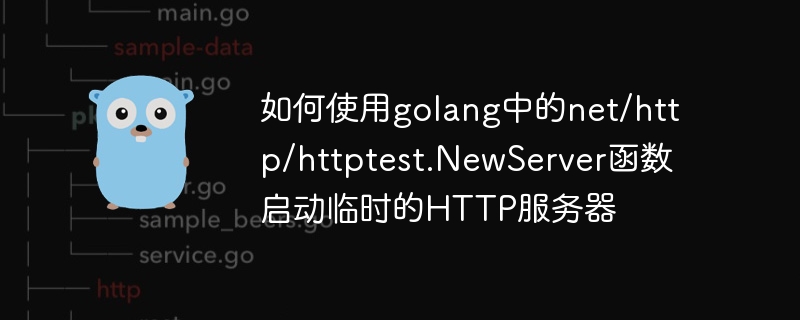
如何使用golang中的net/http/httptest.NewServer函数启动临时的HTTP服务器
在开发Golang的Web应用程序时,有时我们需要启动一个临时的HTTP服务器来进行测试或者模拟某些服务。Golang标准库中的net/http/httptest包提供了一个函数NewServer,可以很方便地启动一个临时的HTTP服务器。
下面是一个具体的代码示例:
package main
import (
"fmt"
"net/http"
"net/http/httptest"
)
func main() {
// 创建一个临时的HTTP服务器
server := httptest.NewServer(http.HandlerFunc(func(w http.ResponseWriter, r *http.Request) {
// 处理请求
fmt.Fprintln(w, "Hello, World!")
}))
// 打印临时服务器的URL
fmt.Println("临时服务器的URL:", server.URL)
// 发送GET请求到临时服务器
resp, err := http.Get(server.URL)
if err != nil {
panic(err)
}
defer resp.Body.Close()
// 读取响应内容
body, err := io.ReadAll(resp.Body)
if err != nil {
panic(err)
}
// 打印响应内容
fmt.Println("响应内容:", string(body))
// 关闭临时服务器
server.Close()
}上面的代码示例中,我们使用NewServer函数创建了一个临时的HTTP服务器,并定义了一个匿名函数作为处理函数。处理函数接收一个http.ResponseWriter和一个http.Request参数,在函数中我们向客户端返回了 "Hello, World!" 字符串。
立即学习“go语言免费学习笔记(深入)”;
然后我们通过server.URL获取到临时服务器的URL,并打印出来。接着我们使用http.Get发送一个GET请求到临时服务器,并读取响应内容。最后我们打印出响应内容,并通过server.Close()关闭临时服务器。
通过使用net/http/httptest包中的NewServer函数,我们可以很方便地启动一个临时的HTTP服务器,并进行测试或者模拟某些服务。这在开发Web应用程序时非常实用,特别是在需要进行HTTP请求的单元测试中。
以上就是如何使用golang中的net/http/httptest.NewServer函数启动临时的HTTP服务器的详细内容,更多请关注php中文网其它相关文章!

每个人都需要一台速度更快、更稳定的 PC。随着时间的推移,垃圾文件、旧注册表数据和不必要的后台进程会占用资源并降低性能。幸运的是,许多工具可以让 Windows 保持平稳运行。

Copyright 2014-2025 https://www.php.cn/ All Rights Reserved | php.cn | 湘ICP备2023035733号